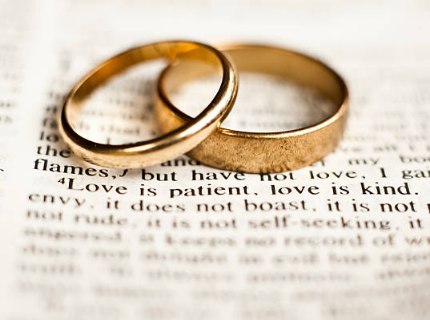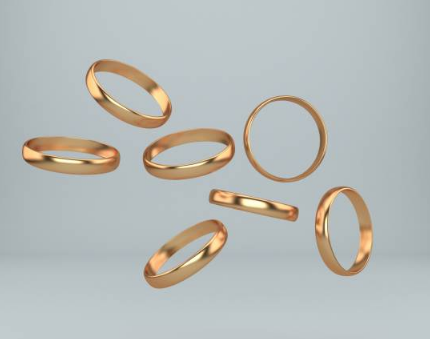So, have you decided to buy a gold ring and need some guidance? Let’s take a look at the most important factors that should be considered before deciding which ring to buy.
What Carat Should My Gold Ring Be?
A gold carat is a number that can tell you how many parts of a piece of jewelry there are in total 24 parts of pure gold. For example, a 10-carat gold ring contains about 42% gold (10 divided by 24) and the rest is other metals such as zinc, nickel, etc.

As you might guess, the higher the carat gold is more expensive because it is more pure, so consider the price when deciding on the carat number.
However, there is another factor that is sometimes overlooked: durability. Since pure gold is very soft, the lower the carat count of a gold ring, the harder and more durable it will be.
Here are some simple rules to help you decide when you should choose a higher or lower carat:
Low-karat gold rings, such as 10k or 14k, are suitable for everyday wear because they are less prone to scratching and require less polish.
In addition, ring parts made of low-karat gold do not bend or break as easily as ring parts made of pure gold.
For jewelry that is not worn often, a high-carat gold ring (such as 18k, 20k, or 22k) is a good choice. They look more yellow than low-carat rings, but they are also more prone to scratches.
Rings made of pure gold will also wear out faster, and their parts will also break more easily.
Do Gold Rings Contain Nickel?
Nickel is a metal that is usually added to gold alloys. The problem with it is that it can cause a rash in people who are allergic to nickel.
If you have such allergies, don’t buy a 10k gold ring because the nickel concentration in it may be too high for you. A 14k gold ring may be a better option, but it can also be problematic for people with allergies sometimes.

To be on the safe side, choose a ring that is over 18k. It’s not that purer gold rings can’t contain nickel, but the concentration of nickel in higher karat gold is usually too low to cause allergy symptoms.
What Material Should Ring Settings Be Made Of?
If you have a gold ring with gemstones, make sure you know the material of the setting. This is especially important for prong settings, as the stones are held in place by means of small columns.
If these prongs are made of gold, they will wear out quickly due to the softer metal, and you may lose the gemstone if one or more of the worn prongs bend or break.
It’s even better if the prongs in the ring setting are made of a more durable metal, such as platinum, if you can afford it. Another good option is white gold: it is surface with rhodium, which makes it more durable and less prone to bending.
Should a Ring Be Solid Gold or Gold-Plated?
Not all gold rings are made entirely of gold – some are simply covered with a layer of gold, with other metals underneath the coating.
This type of gold-plated ring is usually less expensive than a solid gold ring. However, the plating will wear out over time, depending on how often you wear your ring.
In general, consider buying a gold-plated ring only if you wear it occasionally; Otherwise, plating won’t last long. If you’re allergic to nickel, make sure the underlying material doesn’t contain nickel, or skip gold-plated items altogether.

For rings that you wear regularly, stick to pure gold: it will last longer in the long run.
Consider the Ring
When you’re considering buying a gold ring, it’s important to consider how strong its body is.
The shank of the ring should not be too thin – if it is too thin, the ring can easily become thinner when worn, and at some point, it is likely to break.
Since yellow gold is a soft metal that wears out easily, choose a ring that is fairly thick so that it won’t bend or break after a year or so.
